The STEMinds Eduponics Mini is a smart-agriculture and IoT board. With an ESP32 module at its heart, Eduponics Mini features an array of built-in sensors—including temperature, humidity, barometric, ambient light, water quantity, and soil moisture sensors—that work together to make smart agriculture easy and affordable. It supports Wi-Fi and Bluetooth connectivity and consumes very little power, making it perfect for real-world IoT applications.
We believe that high-quality industrial-IoT and smart-agriculture technology should be accessible to everyone, not just to those with significant resources and technical expertise. Using MicroPython or Arduino IDE, you can design your smart garden in no time. We’ve assembled all of the documentation you will need to guide you, step-by-step, into the world of electronics and programming.
Eduponics Mini can help you develop essential Industry-4.0 skills while creating real-world applications that are also useful in your daily life. Examples might include:
We’ve designed and developed an easy-to-use mobile app for the Eduponics system. It has a React Native user interface and a public MQTT broker on the backend, which means there’s no need to deploy and maintain a database. It allows you to:
The Eduponics App currently supports soil-moisture sensors only, but we are working to add support for hydroponics and even smart-aquarium projects!
In addition, we’ve created a library to help you modify nearly every aspect of the app. With it, you can add plants, rename them, configure new sensors, and more. It is currently available for Android and will soon will be available for iOS.
From the beginning, quality has been our highest priority for Eduponics Mini, and we’ve worked hard to integrate the best possible sensor components on the market. Our Soil Moisture Sensors are suitable for long-term, real-life applications and will continue operating—hassle free—without supervision.
In Hydroponics we often need to use multiple submersible sensors to measure pH, EC, TDS, ORP, and other such indicators. Doing so can be challenging, however, because those sensors are typically unable to operate at the same time without interfering with one another. While working on Eduponics Mini, we researched a few DIY solutions using relays to turn the sensors on and off…but then we came with a solution that is both easier and more effective!
Using the Eduponics Mini Extension board, you can toggle the analog sensor state, which allows multiple sensors to operate simultaneously without conflict. And no current will flow when we’re not using the sensors, which results in lower power consumption.
And the best part? This entire process is fully automated in our library and requires no additional code!
We started developing Eduponics in response to the massive food shortages we observed in the early days of the COVID-19 pandemic. We were looking for quick, efficient, at-home techniques for growing our own veggies and greens.
After looking into a few high-quality DIY water-irrigation systems—including the necessary control boards, modules, and sensors—we almost gave up due to the high cost (and the even higher level-of-effort) required to use the existing solutions we identified. Instead, we decided to step up and make a difference by designing our own smart-agriculture and IoT development kit. And so Eduponics Mini was born.
We are working hard to enhance the core Eduponics-Mini functionality. We’ve already developed a custom extension board that includes an extremely accurate ADS1115 ADC and the MCP23017 IO extension IC. The Eduponics Mini Extension Board comes with an extra four relays and an extra four analog inputs that connect directly to the ADS1115 ADC.
In the near future, we will be making additional extensions with sensors that monitor things like pH, EC and water temperature.
Eduponics Mini offers far more functionality than similar projects in the same price range. It is also far more extensible. With dozen of external I/O pins, Eduponics Mini allows you to integrate any sensor you wish.
| Eduponics Mini | EcoDuino | Watering kit | Smart Plant Care | Gardening Add-On Kit | |
|---|---|---|---|---|---|
| Manufacturer | STEMinds | DFRobot | Elecrow | Seeed Studio | STEMpedia |
| MCU | ESP32 | ATmega | ATmega | None | None |
| Kit Price | $69.00 | $53.90 | $59.00 | $59.90 | $54.00 |
| Soil Moisture sensor | Yes (custom design) | Yes | Yes | Yes | Yes (Corrosive) |
| Extension IO pins | Yes | No | No | Yes | No |
| Wi-Fi | Yes | No | No | No | No |
| Bluetooth/BLE | Yes | No | No | No | HC05 Bluetooth module |
| Environmental sensors | BME280 | DHT11 | No | DHT11 | No |
| Low powered | Supports deep sleep | No | No | No | No |
| Protection enclosure | STL files provided | Yes | No | No | No |
| RTC Module | Yes | No | Yes | No | No |
| Ambient light sensor | Yes | No | No | Yes | Yes |
| Water quantity sensor | Yes | No | No | No | No |
| IoT Mobile app | Yes, Eduponics APP | No | No | No | No |
| Indications | RGB LED | No | OLED Display | OLED Display | Blue/Red LEDs |
| EEPROM | Yes | No | No | No | No |
| Battery / solar powered | External module | External module | No | No | No |
| Open Source | Schematic+SW+STL | SW | SW | HW+SW | SW |
| Programming languages | Arduino, MicroPython | Arduino C | Arduino C | Arduino C | Arduino C |
| USB interface | Type-C | Micro-USB | Micro-USB | None | None |
| Supported extensions | Yes | No | No | Arduino HATs or Grove | No |
| Documentation | Complete, Arduino+Python | Minimal | Minimal | Minimal | Minimal |
While looking for soil-moisture sensors to use with our kit, we found ourselves struggling. The sensors we were finding just weren’t good enough! We purchased and tested multiple sensors and eventually decided to make our own. As you can see in the comparison below, our sensor has the highest voltage range and sensitivity between all the sensors we’ve tested, allowing you to create a stable and precise high resolution smart agriculture and IoT applications.
| STEMinds (Short) | STEMinds (Long) | DFRobot | Grove Seeed studio | Generic v1.2 | |
|---|---|---|---|---|---|
| Type of sensor | Capacitive | Capacitive | Capacitive | Capacitive | Capacitive |
| Operating voltage | 5 V | 5 V | 3.3 - 5.5 V | 3.3 - 5 V | 3.3 - 5 V |
| Min voltage output | 0.987 V | 0.561 V | 2.468 V | 2.378 V | 1.022 V |
| Max voltage output | 3.3 V | 3.3 V | 3.112 V | 3.570 V | 2.300 V |
| Min output value | 154 g | 106 | 260 | 494 | 214 |
| Max output value | 668 | 683 | 517 | 745 | 480 |
| Operation current | 7 mA | 7 mA | 5 mA | 8 mA | 6 mA |
| Resolution (high-low) | 514 | 577 | 257 | 251 | 266 |
| Sensor price | $4 | $5 | $5.90 | $5.90 | $1.6 |
Please note the following:
We’ve created over 15 detailed lessons to help you get started with Eduponics Mini.
You can find these tutorials, which are available for both Arduino IDE and MicroPython, in our official documentation.
The documentation is open-source and anyone can contribute to it by sending a pull request at the documentation repository.
3D models of the Eduponics series and the Eduponics Mini ESP32 3D enclosure are available inside the Eduponics Mini GitHub repository.
Our code is entirely open source (under the MIT license) and available for anyone to modify change, distribute, or use. While Eduponics Mini supports both MicroPython and Arduino IDE, MicroPython is currently given a higher priority. Arduino Platformio is officially supported as well.
Produced by STEMinds in Eilat, Israel.
Sold and shipped by Crowd Supply.
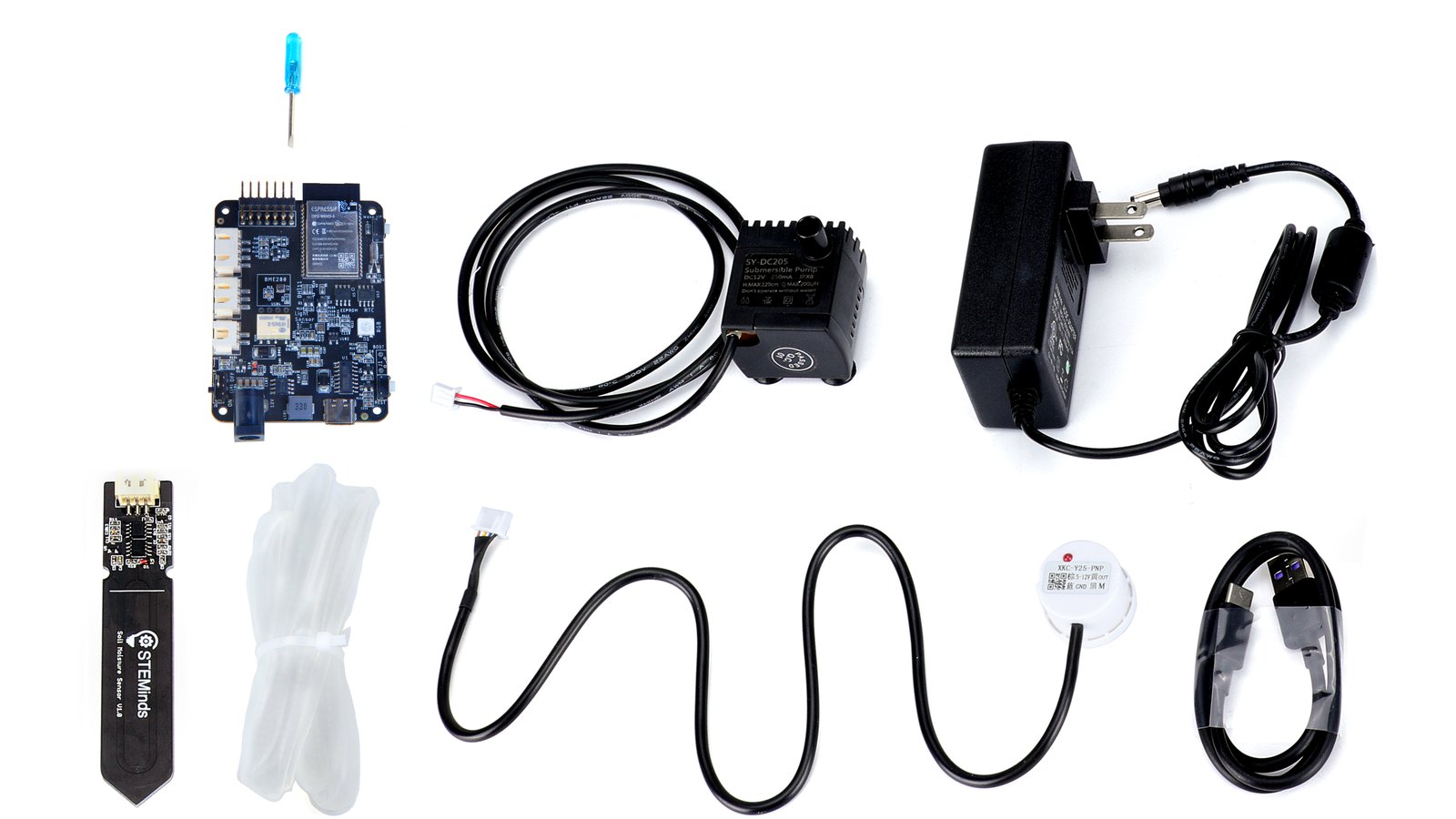
The Eduponics Mini Kit includes the the Eduponics Mini ESP32 dev board and everything you need to get started, including one (short) soil-moisture sensor.
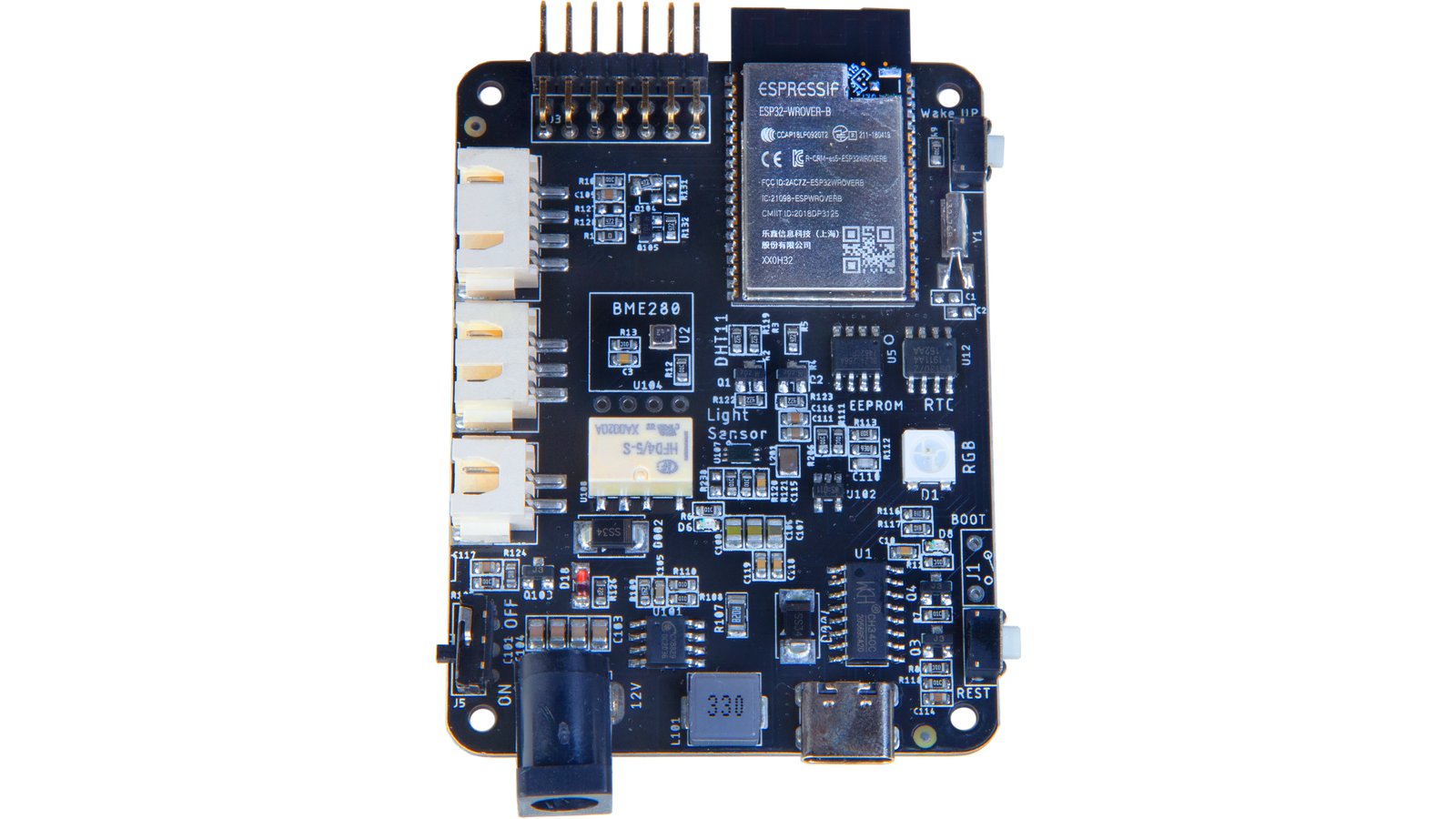
An Eduponics Mini Dev board with integrated ESP32 module and sensors, including BME280, EEPROM, RTC, RGB, and a BH170 light sensor.
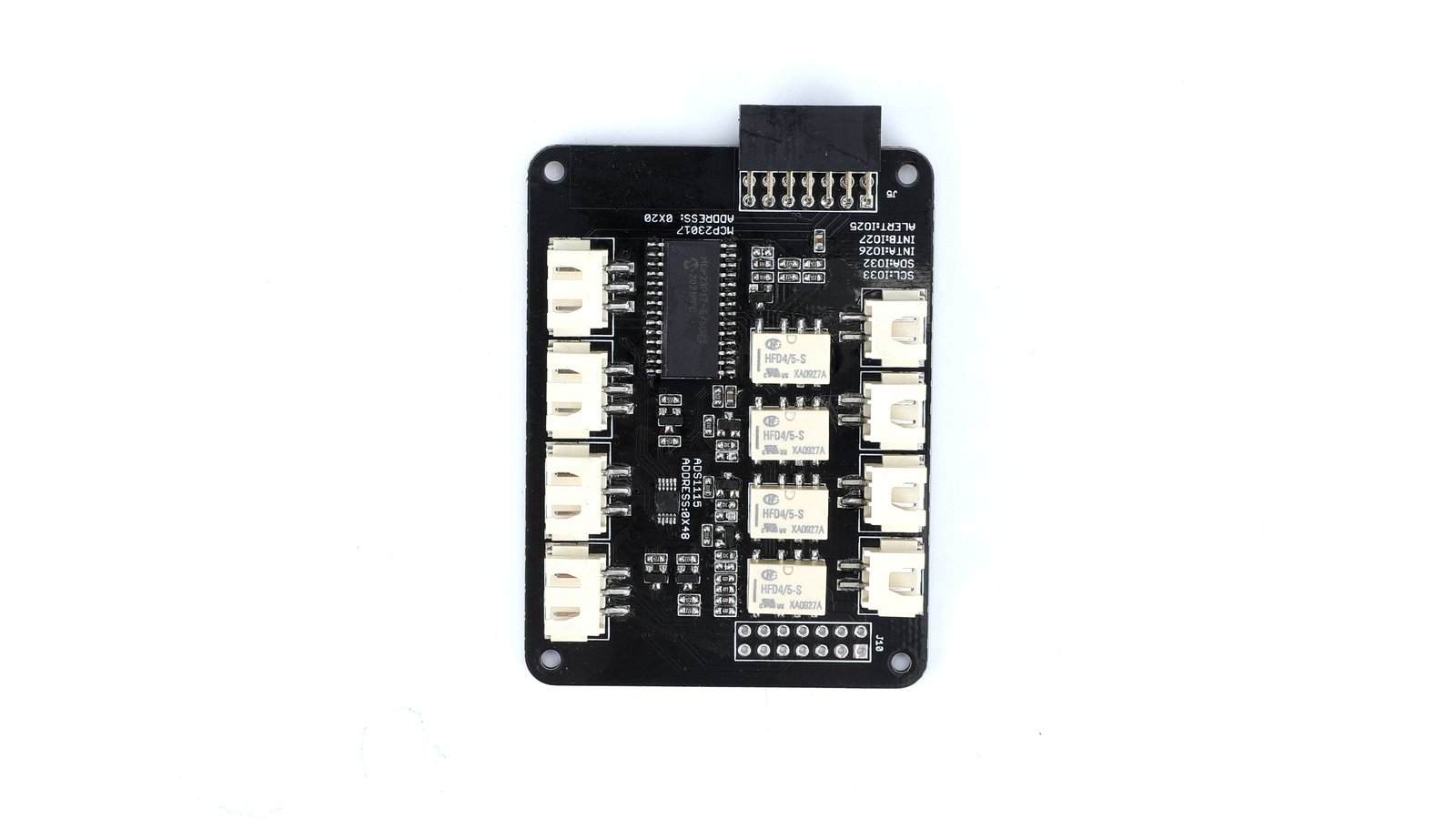
This energy-efficient extension board for Eduponics Mini includes four relays, an ADS1115 ADC, and an MCP23017 IO extension IC.
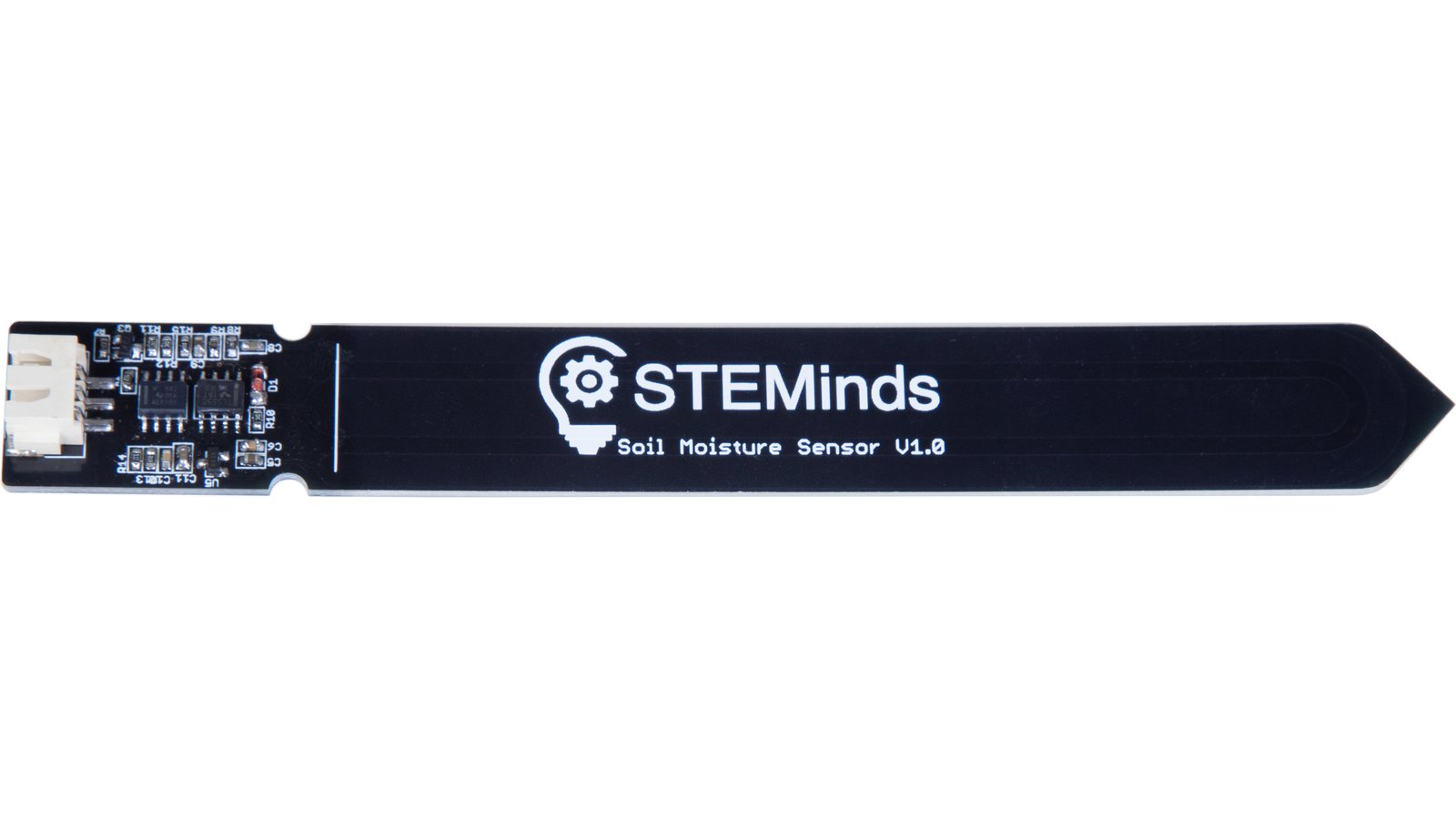
One long STEMinds soil-moisture sensor, which includes an accurate TI timer and a voltage regulator for a stable signal.
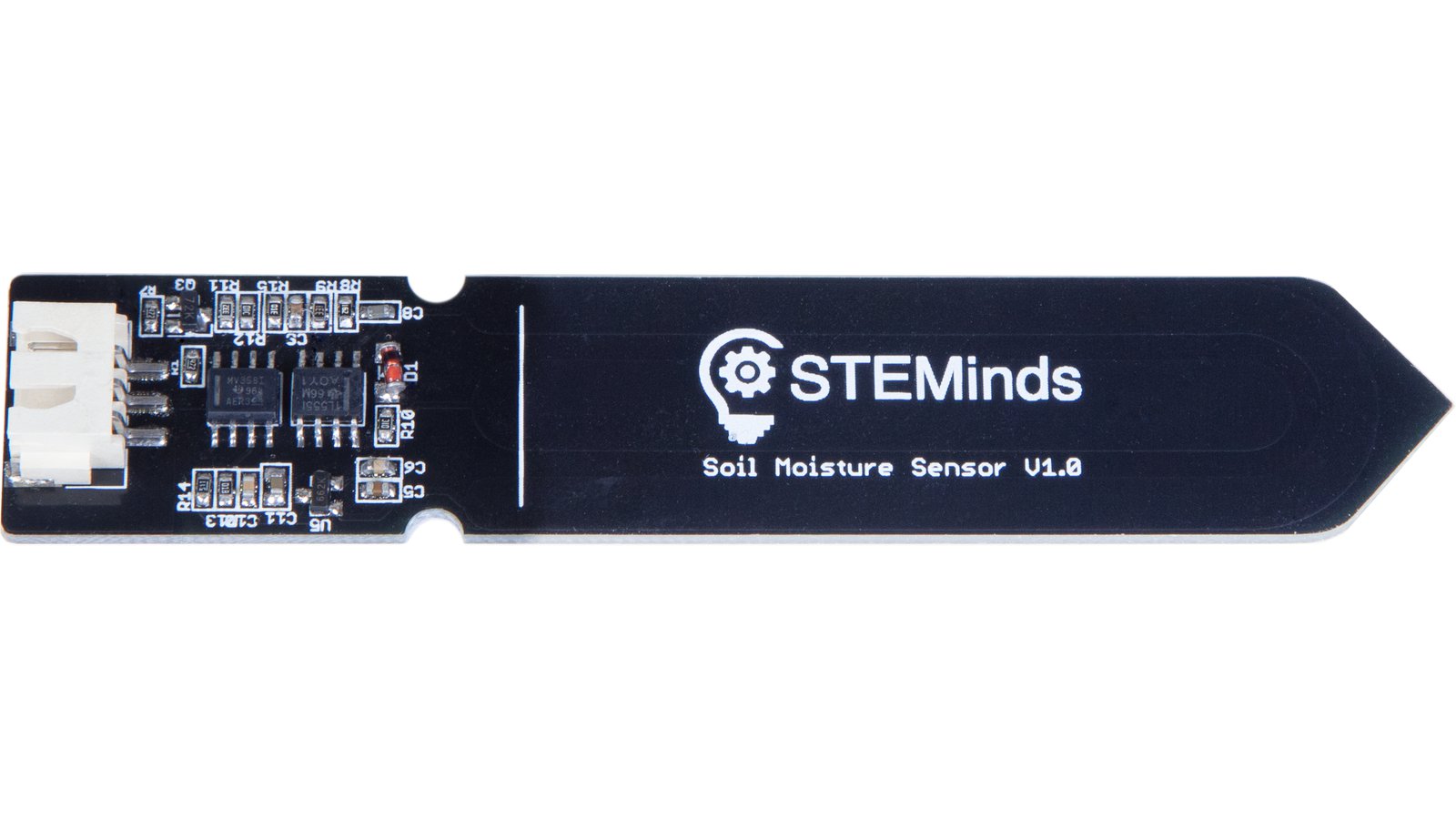
One short STEMinds soil-moisture sensor, which includes an accurate TI timer and a voltage regulator for a stable signal.
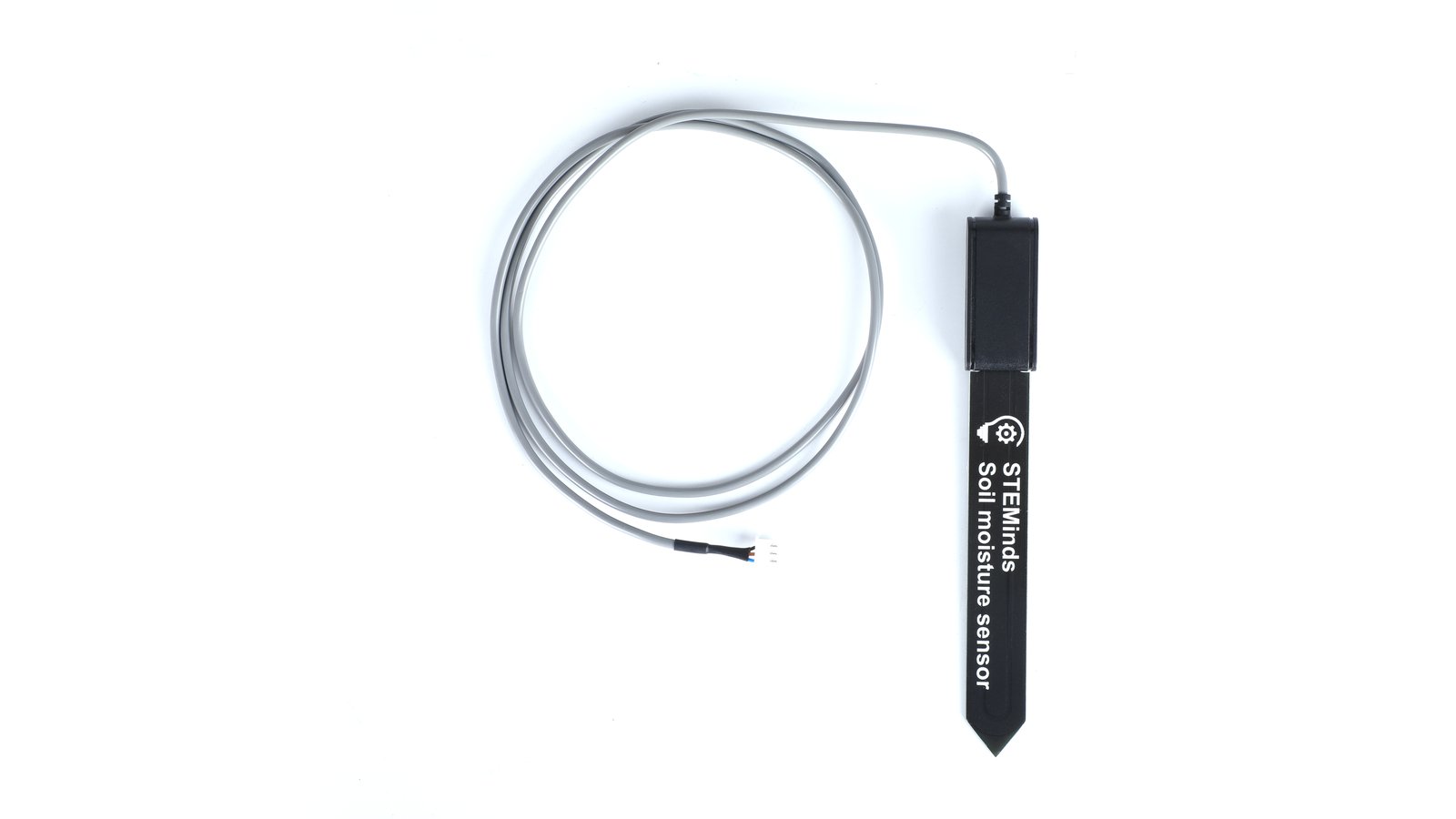
This limited-edition, high-precision, waterproof soil-moisture sensor is a 5 V output sensor that's ready to tackle indoor and outdoor challenges.